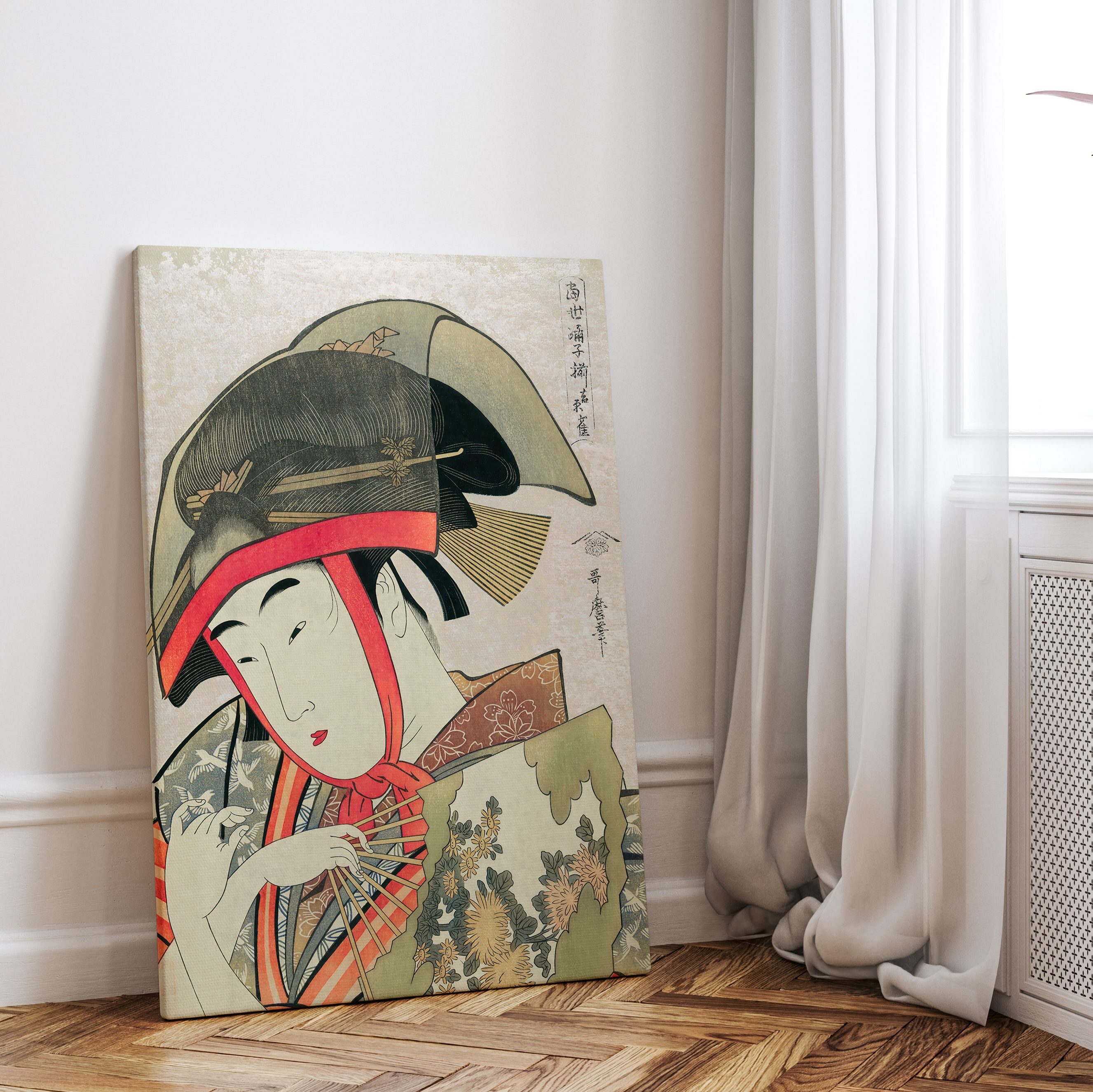
Japanese woodblock prints, known as Ukiyo-e, represent a captivating genre of traditional art that emerged during the Edo period (1603-1868) in Japan. This style, characterized by its distinctive use of woodblock printing techniques, showcases a rich tapestry of cultural, historical, and aesthetic elements. In this article, we delve into the world of Japanese woodblock prints, focusing on iconic artists like Kitagawa Utamaro and the timeless beauty of this art form.
The Art of Ukiyo-e: An Introduction
Ukiyo-e, which translates to “pictures of the floating world,” encapsulates a genre of Japanese woodblock prints that flourished from the 17th to the 19th centuries. This art form is renowned for its depictions of landscapes, kabuki actors, beautiful women (bijin-ga), and historical scenes. Ukiyo-e prints were created through a meticulous process involving the carving of woodblocks, inking, and pressing onto paper, resulting in vibrant and intricate images.
Kitagawa Utamaro: Master of Bijin-ga
One of the most celebrated artists of the Ukiyo-e genre is Kitagawa Utamaro. Known for his exquisite portrayal of beautiful women, or bijin-ga, Utamaro’s prints offer a glimpse into the elegance and sophistication of Edo-period Japan. His work captures the grace and charm of geishas and courtesans, using delicate lines and subtle colors to convey their beauty. Examples of Utamaro’s renowned prints include “Three Beauties of the Present Day” and “The Ladies of the Yoshiwara.”
Edo Period Art: A Cultural Reflection
The Edo period was a time of significant cultural development in Japan, with art playing a crucial role in reflecting societal values and aesthetics. Woodblock prints from this era often depicted scenes of everyday life, including theater performances, sumo wrestling, and scenic landscapes. Artists like Katsushika Hokusai and Utagawa Hiroshige are famous for their contributions to landscape prints, capturing the natural beauty of Japan with their masterful techniques.
The Shunga Genre: Intimate Art of the Edo Period
Shunga, or “spring pictures,” is a genre of Japanese woodblock prints that explores themes of eroticism and intimacy. These prints were created for a private audience and often featured elaborate and imaginative depictions of sexual encounters. Despite their provocative nature, shunga prints were considered an integral part of Edo-period art and culture, reflecting the complex views on sexuality during this time.
Collecting and Displaying Japanese Woodblock Prints
Japanese woodblock prints continue to be highly valued by collectors and art enthusiasts worldwide. When selecting prints for your collection, consider the historical context, the artist’s style, and the condition of the print. Whether you are drawn to the elegant depictions of Kitagawa Utamaro’s bijin-ga or the dynamic landscapes of Hokusai, each print offers a unique window into the past.
For those interested in showcasing Japanese woodblock prints in their homes, high-quality reproductions and canvas prints are available. These prints can add a touch of traditional Japanese art to your space, blending classic aesthetics with contemporary decor.
Bringing Japanese Art into Your Home
If you’re looking to enhance your home decor with the timeless beauty of Japanese woodblock prints, consider adding these elements:
- Art Reproductions: High-quality reproductions of famous prints like Hokusai’s “The Great Wave off Kanagawa” or Utamaro’s portraits can bring historical elegance to your living space.
- Canvas Prints: Canvas prints offer a durable and stylish way to display your favorite woodblock prints, with options for extra-large canvases to make a bold statement.
- Gallery Wall Art: Create a gallery wall featuring a selection of Japanese prints to showcase the diversity of Ukiyo-e art and add cultural depth to your decor.
By incorporating Japanese woodblock prints into your home, you can celebrate the rich artistic heritage of Edo-period Japan and enjoy the beauty of these remarkable artworks.





